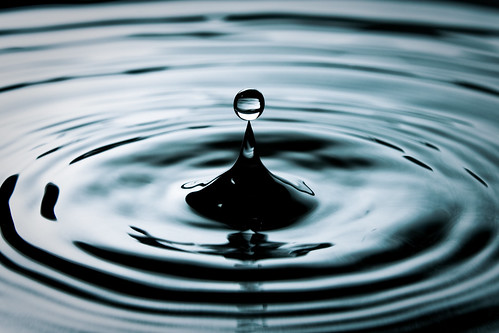Search Results for Tag: barefoot college
Water blog Part III – An ocean full of solutions?
In the third and final part of our blog series on water, Julian Claudi looks at initiatives, small and big, around the world that try to tackle the water crisis by advocating more sustainable and efficient uses of water but also various techniques to obtain clean water.
Let’s listen to Vandana Shiva, Indian physicist, environmental activist, recipient of the Right Livelihood Award (the ‘Alternative Nobel Prize’) and author of the book “Water Wars” summing up the problem of the water crisis in India and how it echoes the global water crisis. Shiva addresses both – communities and water companies:
So, for India – and the world – what are the ways out?
“Governments must make a concerted effort to invest inimproving water infrastructure and management […] We must also engage communities, the private sector and civil society in promoting water conservation and water reuse.”
This is Noeleen Heyzer, Executive Secretary of United Nations Economic and Social Commission for Asia and the Pacific (ESCAP), in her speech at the 2010 Asia-Pacific Water Ministers’ forum. She called for
“…the use of simple technologies such as drip agriculture, climate appropriate cropping, rainwater harvesting and grey water reuse [which] can go a long way in increasing our water eco-efficiency.”
But can the world wait for governments to finally start doing “the job” more comprehensively?
It looks like a global solution may be some way off, yet. But there are plenty of grassroots initiatives. Barefoot College in India is an example.
The Barefoot College experts are employing an impressive range of different techniques to obtain clean water: Rain water harvesting (RWH) tanks, dams, solar powered reverse osmosis (R/O) water desalination plants, wells and ponds for ground water recharge obtain clean water.
Some of these work well at a local level, but may not be feasible on large scales. In the case of reverse osmosis (R/O) water desalination plants, it would raise serious concerns:
claims Food & Water Watch, a the Washington, D.C.-based consumer rights NGO, in a special report on reverse osmosis/water desalination:
“Ocean desalination ignores the fact that the water shortages […] are not due to a lack of natural water resources, but rather to shortsighted water policy that focuses on finding new water resources instead of managing existing resources wisely.”
But more sustainable solutions may be facing an uphill struggle. Large-scale desalination is projected to become a highly traded commodity on global markets soon.
“Depleting water supplies, coupled with increasing water demand, are driving the global market for desalination technology, which is expected to reach $52.4 billion by 2020, up 320.3% from $12.5 billion in 2010.“
But even if the trading floors love desalination, the Pacific Institute, an US non-profit research institute, adds that
It recommends that
Even wastewater recycling doesn’t appear to be entirely free of side effects, as Vivian Futran, Project Manager and PhD Student at Ben Gurion University in Israel points out here:
“For example, the types of sewage treatment used historically may not remove all micro-contaminantsincluding endocrine disrupting compounds (EDCs), a class of chemicals that can affect human development and reproductive functions.”
She concludes that
“Wastewater recycling is a relatively young technology that, while helping tackle some obvious water-related problems in Israel and elsewhere, may present dangers which still have not been fully characterized.”
Sounds like more research needs to be done. But here’s another, and encouraging example:
“Countries in the Middle East, such as Israel, and Jordan, have already transformed their agriculture [with this system] “, said Stravato. But in the Sahel, drip irrigation, which is almost a minor revolution, is only just getting going.”
Another idea is to collect fog to harvest freshwater from it – a technique that requires no on-going energy input and is considered to have a positive outcome also in connection with reforestation. Have a look at some promising projects here:
Meanwhile, “Citizen Matters” an independent local collaborative online magazine in Bangalore, India’s third most populous city, reminds us that it is vital to be careful with existing water reservoirs. For instance, aquifers – soil layers holding water – should be replenished by rainwater harvesting (RWH) and must not be permanently exploited:
“We need to replenish this water as it is finite and the best method found so far is RWH. Just digging a borewe- well and exploiting all the water is an uneducated move. Use all in your power to replenish the water table mainly with RWH and this can help maintain a good source of clean and fresh water, with the future in mind. ”
A good example to close our blog series. We hope we could shed some light on the complex issue of the global water crisis and the initiatives to address it. Everywhere something can be done on various levels to improve the situation and to make sure the right to clean and fresh water for everyone doesn’t remain a theory.





Feedback